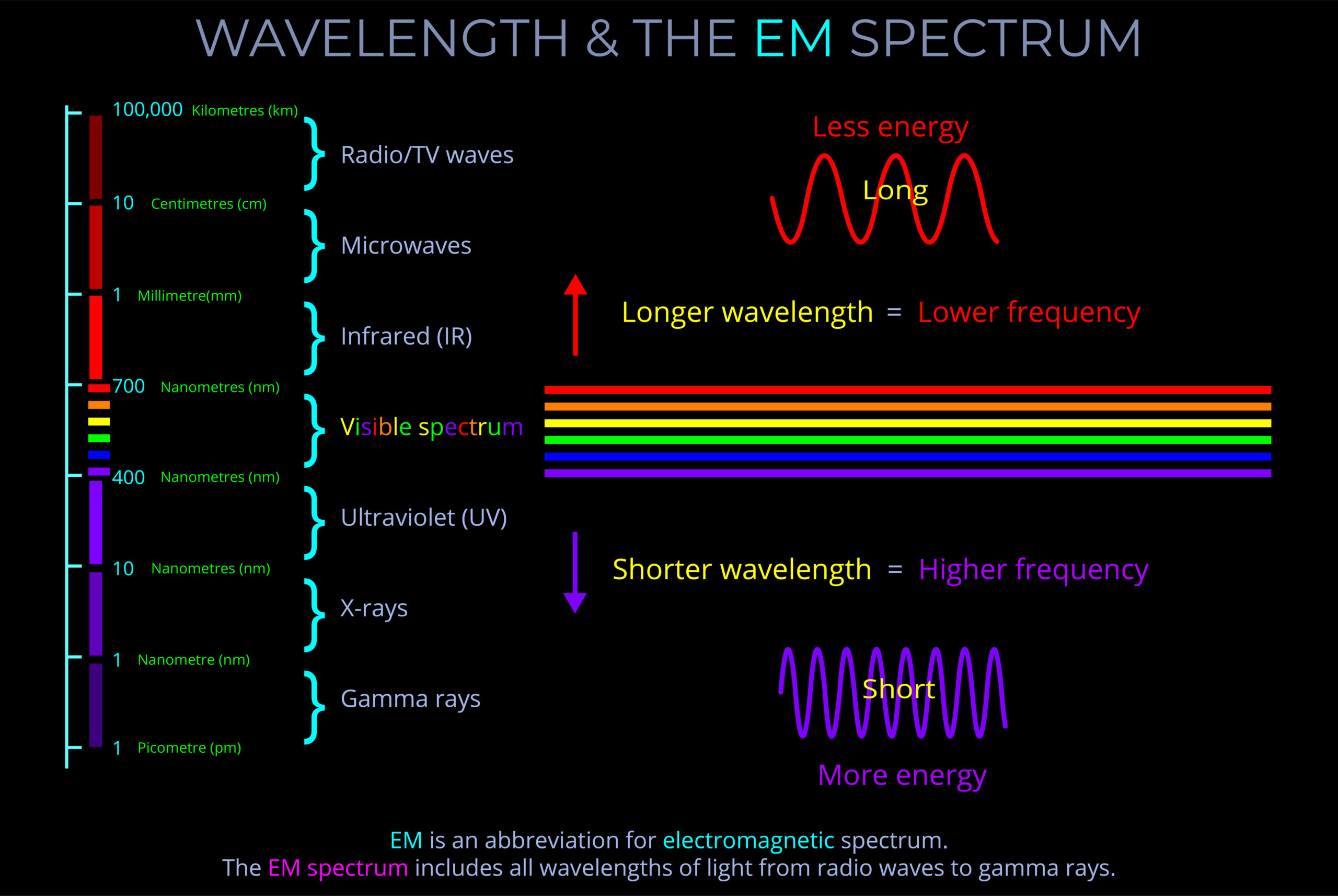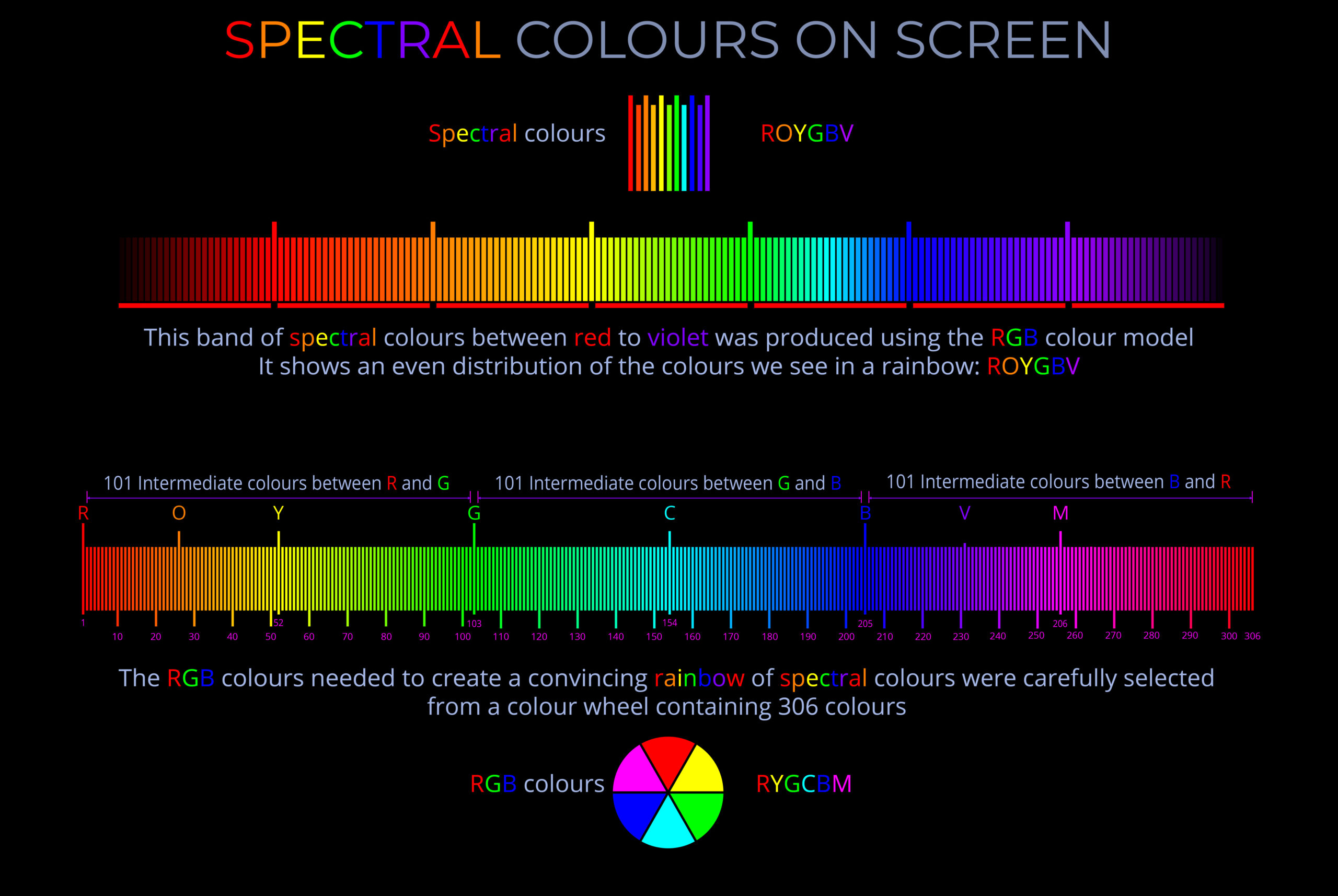A continuous spectrum refers to a complete, unbroken range of wavelengths of light.
- A continuous spectrum of light is produced by a light source that emits photons over a continuous range of wavelengths.
- The spectral colour model deals with a continuous spectrum, it presents colours in a strip, arranged according to their wavelengths, from red at one end to violet at the other.
- Sunlight is usually described as a continuous spectrum of colours that make up the visible spectrum with red at one end and violet at the other.
- In reality, the spectrum of sunlight is not entirely continuous, but has dark lines called absorption lines. These lines correspond with specific wavelengths at which light is absorbed by elements in the Sun’s atmosphere.
- The component colours of white light become visible to an observer when the light is dispersed by a prism or a raindrop.
- The colours produced by the RGB colour model and the CMY colour model are usually displayed in the form of a colour wheel rather than a strip of colours.
- A continuous spectrum refers to a complete, unbroken range of wavelengths of light.
- A continuous spectrum of light is produced by a light source that emits photons over a continuous range of wavelengths.
- The spectral colour model deals with a continuous spectrum, it presents colours in a strip, arranged according to their wavelengths, from red at one end to violet at the other.
- Sunlight is usually described as a continuous spectrum of colours that make up the visible spectrum with red at one end and violet at the other.
- In reality, the spectrum of sunlight is not entirely continuous, but has dark lines called absorption lines. These lines correspond with specific wavelengths at which light is absorbed by elements in the Sun’s atmosphere.
- The component colours of white light become visible to an observer when the light is dispersed by a prism or a raindrop.
- The colours produced by the RGB colour model and the CMY colour model are usually displayed in the form of a colour wheel rather than a strip of colours.


